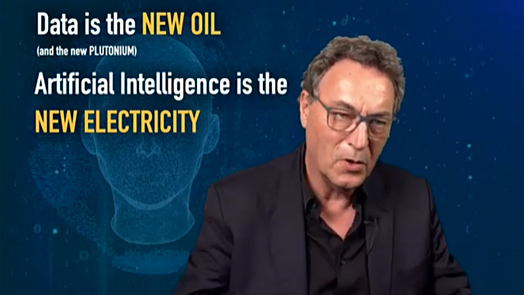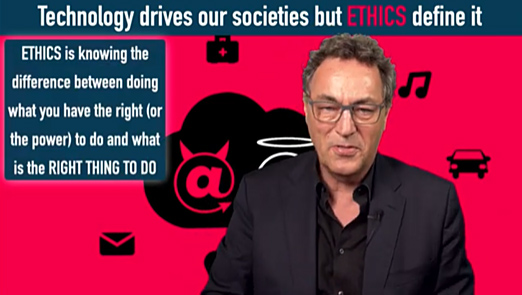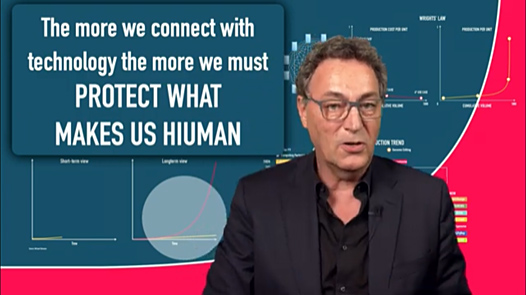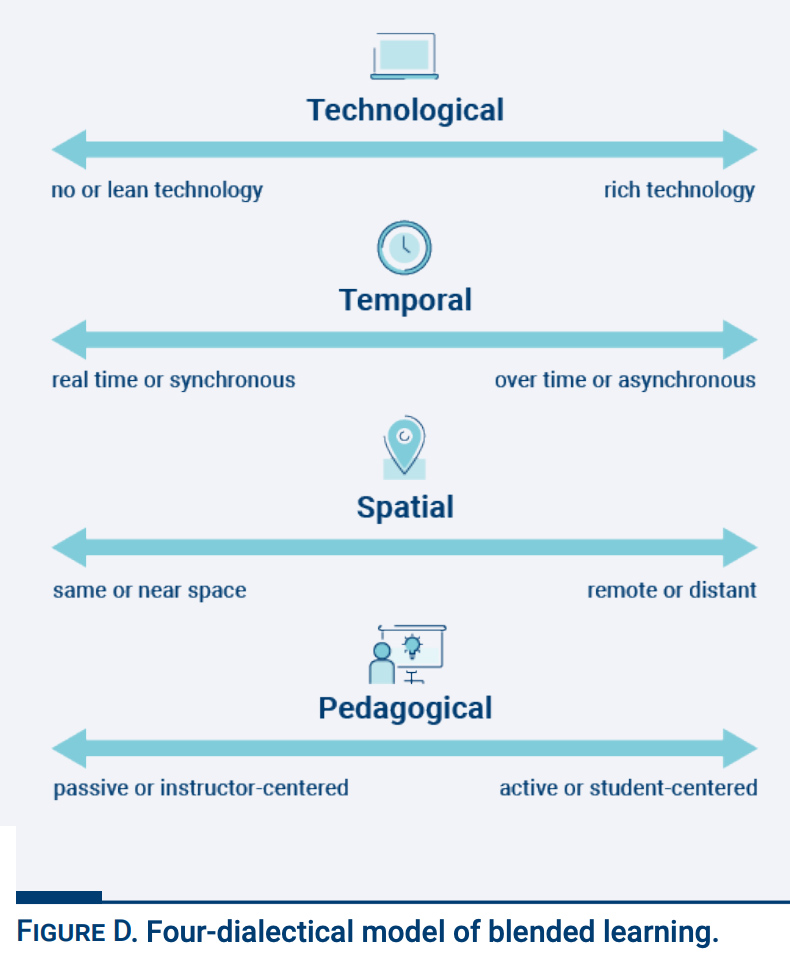New accessibility features for students and teachers using Chromebooks — from educatorstechnology.com
Excerpt:




New accessibility features for students and teachers using Chromebooks — from educatorstechnology.com
Excerpt:
Are smaller class sizes without the pitfalls possible? Pandemic pods make the case — from crpe.org by Ashley Jochim and Travis Pillow
Excerpt:
Pandemic pods were borne by necessity as families faced urgent needs for childcare and remote learning support. But they also offer fresh solutions to an age-old education problem: how to dramatically lower class sizes without diluting teacher quality and falling into traps that have snared traditional class size reduction efforts.
By leveraging pandemic innovations in student support, school systems recovering from the COVID-19 crisis may be able to recreate the high level of individual attention students saw in successful pandemic pods.
As one pod educator told us: “This is probably the most professionally satisfied I’ve been in my entire career. . . . Being able to be one-on-one and form relationships with kids. I can tell you every single one of their strengths, I can tell you their weaknesses. . . . I’ve never been able to do that before in my life, except with my own child, and that’s super powerful.”
From DSC:
I really appreciated this part too: “Learning pods brought new adults—including families and community-based organizations who hosted pods—into the process of supporting student learning.” It’s even more of a community-based effort…a new meaning to the use of teams. 🙂
40 Ideas For Using FlipGrid In The Classroom — from teachthought.com
The Future of Social Media: Re-Humanisation and Regulation — by Gerd Leonhard
How could social media become ‘human’ again? How can we stop the disinformation, dehumanisation and dataism that has resulted from social media’s algorithmic obsessions? I foresee that the EXTERNALTIES i.e. the consequences of unmitigated growth of exponential digital technologies will become just as big as the consequences of climate change. In fact, today, the social media industry already has quite a few parallels to the oil, gas and coal business: while private make huge profits from extracting the ‘oil’ (i.e. user data), the external damage is left to society and governments to fix. This needs to change! In this keynote I make some precise suggestions as to how that could happen.
Some snapshots/excerpts:



From DSC:
Gerd brings up some solid points here. His presentation and perspectives are not only worth checking out, but they’re worth some time for us to seriously reflect on what he’s saying.
What kind of future do we want?
And for you professors, teachers, instructional designers, trainers, and presenters out there, check out *how* he delivers the content. It’s well done and very engaging.
From DSC:
One of our daughters — who just graduated from college with a degree in Early Education — told me about a fun tool for classroom management. It’s called ClassroomScreen.com. I just thought I’d pass it along in case you want to try it out!
“Support your class activities, stimulate engagement and help your students get to work by using the intuitive tools of Classroomscreen.”
She also mentioned:
Caring for Students Playbook: Six Recommendations — from by Every Learner Everywhere in partnership with Online Learning Consortium (OLC) & Achieving the Dream
Table of C0ntents:
Also see:
Why Professors Should Ask Students For Feedback Long Before the Semester Is Over — from edsurge.com by Rebecca Koenig
This article is part of the guide Better, Faster, Stronger: How Learning Engineering Aims to Transform Education.
Excerpt:
About a month into each semester, Gayle Golden sets aside a little time to ask her students about their learning.
The journalism instructor at the University of Minnesota keeps the process simple, with brief questions similar to these:
Golden collects the results, which students give anonymously, then studies the feedback and makes a list of all the information she’s received. During the next class period, she discusses the findings with her students. She tells them which suggestions she plans to put into practice, which recommendations she can’t act on, and why.
From DSC:
Speaking of feedback…
I think it would be good to have our students journal about their learning — integrating their notes, readings, experiments, lectures, etc. Students could check in on these 3 questions for example.
And in the (potentially) digital process, they could also submit a form to their faculty member to answer the question:
Such a question could be electronically delivered to the professor on any given day. This type of feedback loop would provide real-time, formative feedback to the professor as well as help the students develop their metacognitive skills.
I would think that such a process could also be used within the K-12 realm, including homeschoolers.
Also from edsurge.com, see:
3 Education Trends to Watch for the Upcoming School Year — from techlearning.com by Dr. Kecia Ray
Education trends in the year ahead include micro lessons, integrated whole classrooms, and reconsidering assessments
Excerpts:
The study was conducted at the university level but can apply to all levels K-20. Polling, response apps, small group instruction, collaborative activities, and peer instruction are some of the effective strategies identified in active learning.
Thinking about classroom design as having all the necessary technologies — interactive panels, individual devices for students and teachers, integrated software, integrated hardware solutions, accessible high quality digital content, interactive applications — along with a teacher who is well equipped to design classes that incorporate effective instructional strategies will yield high performing students, no matter who you are teaching!
5 Learning Gains Made During the Pandemic — from techlearning.com by Erik Ofgang
Despite the challenges, there have been useful learning gains made during the pandemic
Excerpts:
Planning for a blended future: A research-driven guide for educators — from everylearnereverywhere.org by Every Learner Everywhere in partnership with Online Learning Consortium (OLC) & National Research Center for Distance Education and Technological Advancements (DETA)
Excerpt:
The purpose of this guide
This resource is a collaboration among the National Research Center for Distance Education and Technological Advances (DETA), the Online Learning Consortium (OLC), and the Every Learner Everywhere Network. It is designed to serve as a resource for educators — faculty, instructors, instructional staff, instructional improvement staff, instructional designers, learning experience designers and developers, technological support staff, and other stakeholders — to guide strategic planning for blended learning courses and programs.
Therefore, blended learning is instruction that blends technological, temporal, spatial, and pedagogical dimensions to create actualized learning. Students feel they are successful when they actually learn and that does not always equate to grade and course completion.
KEY IDEAS
Nalukai Academy: Harvesting Hawai’i’s Next Generation of Leaders — from gettingsmart.com by Ashley Ranan
Excerpt:
Nalukai’s program curriculum includes 5 areas of interest:
Also see:
Growth Mindset Leadership & The Pygmalion Effect — from by Trevor Ragan and the Learning Lab; featuring Robert Rosenthal, Christine Rubie-Davies, and Michael Merznich. With thanks to Chris Church, Tenured Professor and prior Associate Dean of Academic Programs at the WMU-Cooley Law School
Our mindsets impact others more than we realize. As leaders, we can use this to improve the learning environment.
Excerpt:
We know that our individual mindsets (growth mindset & fixed mindset) can impact our capacity to grow. But how do our mindsets impact others?
Renowned researcher, Robert Rosenthal outlines his work and shows how our expectations can have a huge impact on the performance and development of the people around us.
Christine Rubie-Davies from the University of Auckland shows us how teacher expectations play a role in student development.
From DSC:
I highly recommend that all professors, teachers and student teachers, trainers — and even those supervising others — check this piece out! Nice work Trevor & Company! Below are some snapshots from this presentation.
Ed Department Sets Expectations For Special Education As Schools Reopen — from disabilityscoop.com by Michelle Diament
Excerpt:
With schools across the nation increasingly eyeing a return to normalcy, federal education officials are further clarifying what that should mean for students with disabilities.
In a 23-page question-and-answer document, the U.S. Department of Education is laying out how the Individuals with Disabilities Education Act, Section 504 of the Rehabilitation Act and other civil rights laws apply as schools return to in-person learning.
The guidance addresses schools’ responsibilities to students with disabilities in remote, hybrid and in-person situations, touching on everything from the right to a free appropriate public education to handling children who are unable to wear masks or maintain social distance.
Leveraging EdTech: brilliant tools for student voice — from global-edtech.com by Cecilia Astolfi
Cecilia Astolfi provides three very useful tips for any teachers wishing to promote student voice in the classroom
There are three tools I recommend in order to enhance the ability of students to express their views in a constructive and valuable manner.
Best Microsoft PowerPoint Tips and Tricks for Teachers — from by Luke Edwards
You may be amazed to see how much you can get out of Microsoft PowerPoint as a teacher
Excerpt:
5. Create Instagram Stories in PowerPoint
Another social media app that has great traction with students is Instagram, specifically the Stories feature that allows you to share images or videos from the day, which are wiped for a fresh set each day.
Imagine doing this in class? Perhaps the students could carry on a story you were studying in class. Maybe they could tell the tale of a comet as it travels through space. The options are huge and it’s easy to do using this PowerPoint template as a starting point.
6 kids games that make math learning engaging and entertaining — from educatorstechnology.com
Excerpt:
BBC School Radio Maths is an excellent educational resource we learned from MakeUseOf‘ s list of 10 Cool Math Games for Kids. School Radio Maths offers a wide variety of educational games to help kids develop their math skills. Kids will get to grapple with various numeracy challenges that involves a higher degree of mental skills. The games are entertaining enough to keep pupils motivated and focused on the learning task at hand.
6 strategies to help you improve your math skills — from educatorstechnology.com
Excerpt:
As a child, did you love math back in the elementary? Now that you are an adult, do you feel awkward with your Mathematic’s skills? Let’s admit it – not everyone is great at Math. Some find it fun, brilliant, stimulating others find it too difficult to comprehend.
However, the stigma associated with math learning is not always true especially knowing that Math is omnipresent and is being used in almost every facet of our life. The purpose of this post is to share with you some of the ways to help you strengthen your Math skills.
This map lets you fly along the path of a drop of water from any place in the U.S. — from fastcompany.com by Adele Peters
Click on any spot or enter an address, and it will show where the water is likely to flow. Good for both learning how pollution and plastic spreads, but also for an aerial visual ride of the country’s waterways.
Also see: river-runner.samlearner.com/
Hands-On with the Lego Snapchat Augmented Reality Experience That Lets You Build With Friends Remotely — from next.reality.news by Adario Strange
Excerpt:
The world of Lego is timeless primarily because everyone, regardless of age or background, can build a wide variety of amazing things with the simple component blocks from the classic toymaker.
But now that Snapchat has brought that dynamic to augmented reality via the Rebuild the World Snapchat Lens the possibilities are truly endless.
Snap Spectacles Early Prototype, Volkswagen Drives into AR, Inside Lego Snapchat, & Instagram Updates AR — from next.reality.news by Tommy Palladino
Best Apps To Learn The Korean Language — from edtechreview.in by Saniya Khan
Excerpt:
Korean, one of the popular Asian languages for non-native speakers, is the official language of the Republic of Korea (South Korea) and the Democratic People’s Republic of Korea (North Korea).
This is an increasingly important language globally considering South Korea’s powerful economy, geopolitical importance, and growing presence in Asian pop culture; perhaps one reason for garnering a surprising amount of interest in people worldwide to learn the Korean language.
5 Places to Sell Your Artwork Online — from hongkiat.com
Excerpt:
Selling art online is making a comeback. Artists have been selling their work on the Internet but as of late, there’s an increase in online art sales. You can of course build your own website to share your art, run your own marketing and promotional exercise via social media and other channels but you will probably gain more exposure with the following websites . Time to get your beautiful art out there.
12 good edtech tools to use in your distance education — from educatorstechnology.com
Excerpt:
Looking for some educational websites to help you with the management of your online (and also face-to-face) classroom teaching? The list below has you covered. It features a collection of some popular web tools you can use to perform a wide variety of educational tasks. These include: creating interactive video lessons, collect formative assessments and provide real-time feedback to students, enhance students learning through the use of digital games and flashcards, create online classes and share assignments and learning resources with students, organize students into appropriate learning groups and many more. Links to these websites are under the visual.
Evolving Instruction in a Rapidly Changing World — from esheninger.blogspot.com by Eric Sheninger
Excerpts:
In Chapter 3 of Disruptive Thinking in Our Classrooms, I lay out tried and true strategies to consider during any direct instruction component of a lesson while setting the stage for learning that empowers students to think disruptively by replacing conventional ideas with innovative solutions to authentic problems. Below is a summary of things to consider as you plan out your instructional design:
